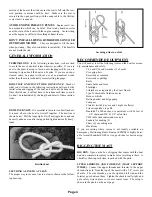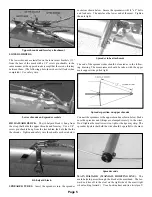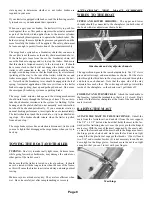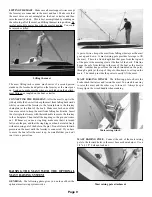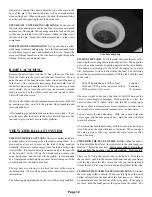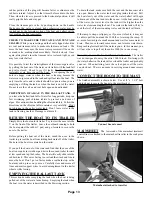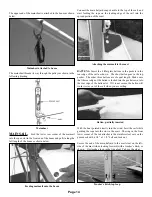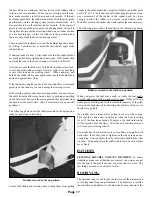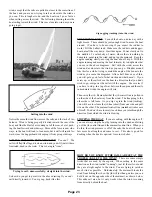
following drawing.
Boom vang
SELF-RIGHTING CAPABILITY
With sails rigged to the mast and boom, the water ballast tank full,
and the masthead pulled to the level of the water, the boat, when
released, should return to an upright position. With virtually any
sailboat, it is possible for the belly of the sails to trap enough
water to hold the boat down on its side if the sheets (sail control
lines) are not released. In the event of a knockdown, release all
sheets to prevent this possibility.
In rough seas, it is possible for waves to enter the cabin through
hatches if the boat is held on its side. While sailing in rough
weather, it is advisable to keep all hatches closed and secured.
FOAM FLOTATION
With the normal gear and crew, the MacGregor 26 has sufficient
solid foam flotation material to keep the boat afloat in the event
the cabin fills. When completely filled with water, the boat will
be relatively unstable, and can roll over.
Do not remove the foam flotation blocks from the interior of your
boat under any circumstances.
POWERING
The boat is designed for an outboard motor of no more than 50
horsepower. Do not use a larger engine.
Have the outboard installed by an experienced installer. The
motor must be installed on the center of the transom, and clamped
or bolted securely. Any bolts through the transom should be well
sealed to prevent leakage. Don’t locate these bolts below the
waterline.
Follow the manufacturer’s instructions to the letter when
installing the engine.
We offer a motor linkage that connects the rudders to the engine.
It causes the engine to turn with the rudders. It is shown below.
Motor linkage, motor connected to steering
The system consists of a stainless tube that protrudes through the
deck and bolts to the port tiller The linkage bar connects this tube
to a small bracket on the front of the outboard with a special 3/8”
stud. The following drawing shows the way that the linkage bar
connects to the motor
Motor linkage, motor connected to linkage bar
The 3/8” bolt and lock nut that hold the two halves of the linkage
Page 18
TWIST PIN SHACKLE
BOTH ENDS
Содержание 26 M
Страница 28: ...Page 28...

